Covered by:
| Recommendation 33 | Use open specifications, where available, to ensure technical interoperability when establishing European public services. Supporting Solutions |
Legal initiative |
Description |
Recommendations |
|
Short title: Law Enforcement Directive Status: In force and transposed |
This Directive aims to better protect individuals’ personal data when their data is being processed by police and criminal justice authorities. It also aims to improve cooperation in the fight against terrorism and cross-border crime in the EU by enabling police and criminal justice authorities in EU countries to exchange information necessary for investigations more efficiently and effectively. The Data Protection Directive for Police and Criminal Justice Authorities is part of the EU data protection reform package along with the General Data Protection Regulation (Regulation (EU) 2016/679). | Recommendation 33 |
|
Short title: Regulation on Interoperability in the field of justice, freedom and security Status: In force |
It aims to to improve checks at the EU’s external borders, allow for better detection of security threats and identity fraud, and help in preventing and combating illegal immigration. | Recommendation 33 |
|
Short title: Open Data Directive Title: Directive 2019/1024 on open data and the re-use of public sector information (Recast) Status: In force and transposed |
The directive promotes the use of open data and lays down the legal framework for the reuse of public-sector information such as geographical, land registry, statistical or legal information held by public-sector bodies or public undertakings, and of publicly funded research data. Public-sector bodies and public undertakings must make their documents available in any pre-existing format or language and, where appropriate, by electronic means in formats that are open, machine readable, accessible, findable and reusable, complete with their metadata. | Recommendation 33 |
|
Short title: INSPIRE DIRECTIVE Status: In force and transposed |
The INSPIRE Directive lays down general rules setting up an infrastructure for spatial information in Europe for the purposes of European Union (EU) environmental policies and for policies or activities which may have an impact on the environment. The European infrastructure builds on that of spatial information that is established and operated by EU countries. |
Recommendation 33 |
|
Short title: eProcurement Directive Status: In force and transpose |
The legislation specifies that when national authorities use public procurement to invite tenders to provide works, supplies or services, they must treat all applicants equally and not discriminate between them. They must also be transparent in their dealings. | Recommendation 33 |
|
Status: In force and transpose |
The Electronic Identification and Trust Services (eIDAS) Regulation creates a new system for secure electronic interactions across the EU between businesses, citizens and public authorities. A revision of the eIDAS Regulation has been proposed, see: Proposal for a Regulation of the European Parliament and of the Council amending Regulation (EU) No 910/2014 as regards establishing a framework for a European Digital Identity, URL: https://op.europa.eu/en/publication-detail/-/publication/5d88943a-c458-… |
Recommendation 33 |
|
Status: In force |
This regulation aims to improve checks at the EU’s external borders, allow for better detection of security threats and identity fraud, and help in preventing and combating illegal immigration. | Recommendation 33 |
|
Short title: Single Digital Gateway Regulation Status: In force |
The single digital gateway will facilitate online access to the information, key administrative procedures and assistance and problem-solving services that citizens and businesses may wish to contact if they encounter problems when exercising their internal market rights while living in or doing business in another EU country. | Recommendation 33 |
| Standards and Specifications | Relevant Recommendations | Corresponding Solutions |
|
Name: ADMS-AP Description: The Asset Description Metadata Schema (ADMS) is a specification used to describe reusable solutions, such as data models and specifications, reference data and open source software. It was created with the help of a working group of experts. On 1 August 2013, W3C published ADMS as a W3C Working Group note. |
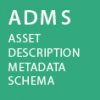
|
|
|
Name: Core Assessments Vocabulary (CAV) Description: The Core Assessment Vocabulary represents and defines what an “Assessment” of “assets” is and how to perform the assessment based on “Criteria”. It is a domain-agnostic vocabulary, meaning that it can be used to assess any type of assets. |
Recommendation 33 | 
|
|
Name: Core Public Service Vocabulary (CPSV) Description: The Core Public Service Vocabulary Application Profile is a data model that has been developed in the context of a Working Group for describing public services. The main focus of the CPSV-AP version 1.00 was the description of public services and business events on the Points of Single Contact which each Member State had to implement in the context of the Services Directive (2006/123/EC). |
Recommendation 33 | 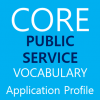
|
|
Name: ELI Ontology Description: The European Legislation Identifier (ELI) is a framework to make legislation metadata available online in a standardised format, so that it can be accessed, exchanged and reused across borders. For general information about ELI (governance, tools and news), and the implementation status of ELI by various stakeholders (in particular, the way ELI is implemented by the Office of Publications on Eur- Lex), please consult the ELI Register on Eur-Lex. |
Recommendation 33 | |
|
Name: Core Standards and Specifications Vocabulary (CSSV) Description: The CSSV is the vocabulary used for the information exchange related to standards and specifications amongst software solutions, as well as, it is the key element for the development of the new release of the EIRA Library of Interoperability Specifications (ELIS). |
Recommendation 33 | |
|
Name: CAMSS Ontology Description: The CAMSS Ontology is a formal description of knowledge as a set of concepts within the CAMSS domain and the axioms connecting its concepts and allowing for logic inferences.
|
Recommendation 33 |
| Solution | Description | Associated Recommendations |
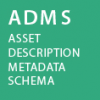
|
The Asset Description Metadata Schema (ADMS) is a specification used to describe reusable solutions, such as data models and specifications, reference data and open source software. It was created with the help of a working group of experts. On 1 August 2013, W3C published ADMS as a W3C Working Group note. | Recommendation 33 |

|
The CAMSS Ontology is a formal description of knowledge as a set of concepts within the CAMSS domain and the axioms connecting its concepts and allowing for logic inferences. | Recommendation 33 |

|
Big data test infrastructure (BDTI) helps public administrations improve the experience of the citizen, make government more efficient and boost business and the wider economy through big data. Big data is high-volume, high-velocity and high-variety information that requires new forms of processing to enable enhanced decision-making, insight discovery and process optimisation. | Recommendation 33 |

|
CIRCABC (Communication and Information Resource Centre for Administrations, Businesses and Citizens) is an open-source, web-based application which enables geographically spread collaborative groups to share information and resources in private workspaces. | Recommendation 33 |

|
The CISE Node manages the communication protocol among participants, including the security, access control to the information and the reliability aspects. The CISE Node is a common block for all the partners connected to the network, but the management is not centralised. It uses the CISE Data and Service Models to ensure technical and semantic interoperability among the CISE stakeholders. | Recommendation 33 |

|
CEF Context Broker is an API that can integrate data from multiple systems, creating a holistic view of information. By providing the layer that describes each type of data, the Context Broker makes it possible to create an interface that makes it easy for anyone to view and interpret big data. Using the Context Broker, organisations can monitor their metrics in real time through live updates. You can share the context information you choose with third parties, enabling process improvements and innovation across the whole data value chain. |
Recommendation 33 |

|
The Core Assessment Vocabulary represents and defines what an “Assessment” of “assets” is and how to perform the assessment based on “Criteria”. It is a domain-agnostic vocabulary, meaning that it can be used to assess any type of assets. | Recommendation 33 |
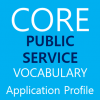
|
The Core Public Service Vocabulary Application Profile is a data model that has been developed in the context of a Working Group for describing public services. The main focus of the CPSV-AP version 1.00 was the description of public services and business events on the Points of Single Contact which each Member State had to implement in the context of the Services Directive (2006/123/EC). |
Recommendation 33 |

|
The CSSV is the vocabulary used for the information exchange related to standards and specifications amongst software solutions, as well as, it is the key element for the development of the new release of the EIRA Library of Interoperability Specifications (ELIS). | Recommendation 33 |

|
The European Parliament Crypto tool Software offers an open source software that enables to exchange files different parties in a secure manner. | Recommendation 33 |

|
The use of CISE specifications and data models, helps to ensure that public administrations are taking into account relevant EU recommendations on standards and specifications in the maritime domain and are seeking to make the approach consistent across borders. | Recommendation 33 |

|
eArchiving provides the core specifications, software, training and knowledge to help data creators, software developers and digital archives tackle the challenge of short, medium and long-term data management and reuse in a sustainable, authentic, cost-efficient, manageable and interoperable way. eArchiving technical specifications are ideal for migrating long-term valuable data between generations of information systems, transferring data to dedicated long-term repositories (i.e. digital archives), or preserving and reusing data over extended (and shorter) periods of time and generations of software systems. |
Recommendation 33 |

|
The eDelivery Building Block helps public administrations to exchange data and documents via AS4 Access Points, based on the AS4 messaging protocol. This allows different parties to exchange electronic data and documents across sectors and borders through a secure eDelivery message exchange network. By connecting to an AS4 Access Point, a public administration can exchange electronic data and documents with any organisation connected to another Access Point in the network. The eDelivery Building Block also helps upgrade exisiting solutions so they can connect to eDelivery messaging networks through an Access Point. | Recommendation 33 |

|
The eID Building Block allows public administrations and private service providers to easily extend the use of their online services to citizens from other Member States, in line with the eIDAS Regulation. | Recommendation 33 |

|
The CEF eInvoicing Building Block aims to promote the successful uptake of electronic invoicing in Europe, respecting the European standard on electronic invoicing and Directive 2014/55/EU on electronic invoicing in public procurement. This is relevant for both public and private entities established in the EU, as well as in participating EEA countries. |
Recommendation 33 |
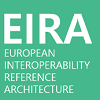
|
The European Interoperability Reference Architecture (EIRA©) is an architecture content metamodel defining the most salient architectural building blocks (ABBs) needed to build interoperable e-Government systems. The EIRA© provides a common terminology that can be used by people working for public administrations in various architecture and system development tasks. The EIRA© was created and is being maintained in the context of Action 2016.32 of the ISA² Programme. The EIRA uses (and extends) the ArchiMate language as a modelling notation and uses service orientation as an architectural style. | Recommendation 33 |

|
The EIRA Library of Interoperability Specifications is a library containing the standards and specifications defining the interoperability requirements of the architectural building blocks (ABBs) contained in the European Interoperability Reference Architecture (EIRA). The aim of this library is supporting solutions architects when modelling using EIRA. | Recommendation 33 |

|
The European Legislation Identifier (ELI) is a framework to make legislation metadata available online in a standardised format, so that it can be accessed, exchanged and reused across borders. For general information about ELI (governance, tools and news), and the implementation status of ELI by various stakeholders (in particular, the way ELI is implemented by the Office of Publications on Eur- Lex), please consult the ELI Register on Eur-Lex. | Recommendation 33 |

|
ELI/XML is an encoding of ELI metadata in an XML schema (XSD). It can be used standalone or imported into other XML documents, typically in a metadata header. The ELI/XML schema is provided with a set of XML transformations to generate ELI in RDF/XML, RDFa header or HTML+RDFa. It is meant to facilitate the integration of ELI in XML-based document workflows. | Recommendation 33 |

|
The CEF eSignature Building Block allows public administrations, businesses, and citizens to electronically sign any document, anywhere in Europe, at any time, in line with the eIDAS Regulation for e-signatures, e-seals and related services offered by Trust Service Providers. | Recommendation 33 |

|
European Single Procurement Document (ESPD) is a self-declaration of the businesses' financial status, abilities and suitability for a public procurement procedure. It is available in all EU languages and used as a preliminary evidence of fulfilment of the conditions required in public procurement procedures across the EU. Thanks to the ESPD, the tenderers no longer have to provide full documentary evidence and different forms previously used in the EU procurement, which means a significant simplification of access to cross-border tendering opportunities. From October 2018 onwards the ESPD shall be provided exclusively in an electronic form. | Recommendation 33 |

|
The CEF eTranslation Building Block is a machine translation tool that helps public administrations and businesses exchange information and documents across all official EU languages, Icelandic and Norwegian. Public administrations, citizens and businesses in the EU will thus be able to benefit from digital services in the language of their choice. |
Recommendation 33 |

|
A cross-sector, open source tool that will help you to exchange structured and unstructured documents and to connect to pan-European e-delivery infrastructures with reduced investment. | Recommendation 33 |

Location Framework Blueprint
|
The European Union Location Framework (EULF) Blueprint is a framework of recommendations and related guidance for publishing and using location information and applying interoperability principles in digital government. The EULF Blueprint was initially developed through the EULF project in the ISA programme. The content has been updated extensively through the European Location Interoperability Solutions for e-Government (ELISE) project, which is part of the ISA2 programme. | Recommendation 33 |

|
IMAPS is a user-friendly online questionnaire, designed as a self-assessment tool to assist public service owners to evaluate key interoperability aspects of their digital public service. Not only can IMAPS be used to assess the interoperability of any public service – from open data portals, and e-voting platforms, to public procurement services, and much more – it is applicable to services at all levels of government (international, national, regional and local). |
Recommendation 33 |
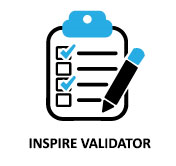
|
The INSPIRE reference validator solution is the tool used by EU Member States data providers to validate their resources (metadata, data sets and services) against the requirements set by the INSPIRE Directive. It is also a key tool for INSPIRE coordinators, both at the national and European level, to monitor the progress of INSPIRE implementation, and for software providers to make sure their solutions are aligned with INSPIRE requirements. |
Recommendation 33 |

|
LEOS is designed to help those involved in draſting legislation, which is usually part of a complex process, by facilitating efficient online collaboration. Comments, suggestions, version control, co-edition, everything is there. Regarding the structure, that is where we aim to be as restrictive as possible and this is not because we are conservative, but because this helps the draſters follow the rules and avoid mistakes. Content is stored in an XML format, currently Akoma Ntoso V3. | Recommendation 33 |

|
Ref2Link automates the detection of references and generates hyperlinks based on dynamic and customisable rules. You can use Ref2Link as a standalone tool or as a building block in IT systems such as LEOS. Ref2Link supports out-of-the-box multilingual detection of EU legal instruments. It enforces the European Legislation Identifier and European Case Law Identifier standards and other references if needed. National public administrations may adapt the default detection rules to meet their own specific requirements. The code will be made available under the free European Union Public Licence (EUPL). |
Recommendation 33 |

|
The “ESS Enterprise Architecture Reference Framework”, abbreviated ESS EARF denotes a set of documents containing a number of key artefacts, which can be used at various stages in projects as well as in the overall governance of the realisation of Vision 2020. The ESS EARF is the result of the collective and iterative work of the DIME/ITDG Task Force on ESS EA which ran from April 2014 till August 2015. | Recommendation 33 |
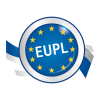
|
The European Union Public Licence is a unique and open source licence created by the European Commission that is available in 23 official EU languages and can be used by anyone. The purpose of EUPL is to encourage public administrations, starting with the EU institutions themselves, to embrace the free and open source model. It is legally consistent with the copyright law of all EU Member States, and supports other popular open source licences. It is especially well-suited for public administrations and interoperability tools shared on Joinup. |
Recommendation 33 |

|
Developed in the context of European Union ISA programme, the Sharing and Reuse Framework for IT Solutions addresses EU, national, regional and local public administrations that aim at reducing costs, increasing their efficiency and fostering interoperability by reusing, sharing or jointly developing IT solutions that meet common requirements. | Recommendation 33 |

TIMAPS v1.0.0 |
This is the Beta version of the Technical Interoperability Maturity Assessment of a Public Service (TIMAPS) survey. This Beta version of the TIMAPS survey has been released on the 02 July 2020 on Joinup. It is a user-friendly online questionnaire, designed as a self-assessment tool to assist public service owners to evaluate key technical interoperability aspects of their digital public service. The current Beta version of TIMAPS (TIMAPS v1.0.0 Beta) is available at the EU survey portal: https://ec.europa.eu/eusurvey/runner/timaps-beta This release is composed of the following elements:
|
Recommendation 33 |




